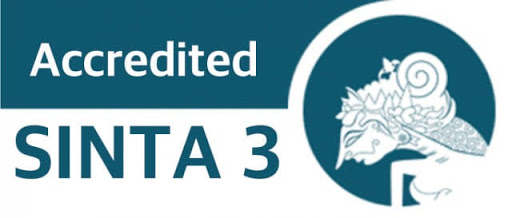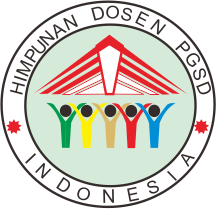UPAYA MENINGKATKAN HASIL BELAJAR MATEMATIKA MELALUI MODEL PEMBELAJARAN BERBASIS MASALAH DI KELAS V SD NEGERI 008 BANJAR NAN TIGO KECAMATAN INUMAN
Abstract
This research begins from the results of learning mathematics students class V of SD Negeri 008 Banjar Nan
Tigo is still very low. This study aims to improve the learning outcomes of mathematics on the subject of
fractional addition operations and mixed count operations. From the data analysis, there was an increase of
both teacher activity, student activity, and student learning result. The activity of teacher in the first cycle I was
66.67% (enough) and at the second meeting increased by 4.16% to 70.83% (good). In the second cycle of
meeting 3 it increased by 12.5% from 83.33% (very good) to 91.67% (very good). Judging from the student
activity also increased from the first cycle I meeting was 62.5% (enough) and at the 2nd meeting increased by
4.17% to 66.67% (enough). In the second cycle of meeting 3 it increased by 12.49% from 66.67% (sufficient) to
79.16% (good) and at 4th meeting increased by 8.34% from 79.16% (good) to 87.5% (very good). The average
baseline score of 55.5 increased to 70.35 in cycle I of the 14.5 points increase and then in cycle II increased to
80.12 on the second cycle, the increase was 9.77 points. From the data analysis there is an increase both from
teacher activity, student activity, and student learning outcomes. It can be concluded that the enforcement of the
problem-based learning model can improve the learning outcomes of students mathematics class V of SD Negeri
008 Banjar Nan Tigo.
Tigo is still very low. This study aims to improve the learning outcomes of mathematics on the subject of
fractional addition operations and mixed count operations. From the data analysis, there was an increase of
both teacher activity, student activity, and student learning result. The activity of teacher in the first cycle I was
66.67% (enough) and at the second meeting increased by 4.16% to 70.83% (good). In the second cycle of
meeting 3 it increased by 12.5% from 83.33% (very good) to 91.67% (very good). Judging from the student
activity also increased from the first cycle I meeting was 62.5% (enough) and at the 2nd meeting increased by
4.17% to 66.67% (enough). In the second cycle of meeting 3 it increased by 12.49% from 66.67% (sufficient) to
79.16% (good) and at 4th meeting increased by 8.34% from 79.16% (good) to 87.5% (very good). The average
baseline score of 55.5 increased to 70.35 in cycle I of the 14.5 points increase and then in cycle II increased to
80.12 on the second cycle, the increase was 9.77 points. From the data analysis there is an increase both from
teacher activity, student activity, and student learning outcomes. It can be concluded that the enforcement of the
problem-based learning model can improve the learning outcomes of students mathematics class V of SD Negeri
008 Banjar Nan Tigo.
Keywords
problem-based learning model; mathematics learning outcomes
Full Text:
PDFDOI: http://dx.doi.org/10.33578/pjr.v2i1.4877
Refbacks
- There are currently no refbacks.
Copyright (c) 2018 JURNAL PAJAR (Pendidikan dan Pengajaran)

This work is licensed under a Creative Commons Attribution-NonCommercial-ShareAlike 4.0 International License.
JURNAL PAJAR (Pendidikan dan Pengajaran)
Secretariat
Program Studi Pendidikan Guru Sekolah Dasar
Gedung B1, FKIP Universitas Riau
Kampus Bina Widya Km. 12,5 Simpang Baru Panam
Pekanbaru Riau Indonesia 28293
e-mail : pajar@ejournal.unri.ac.id



